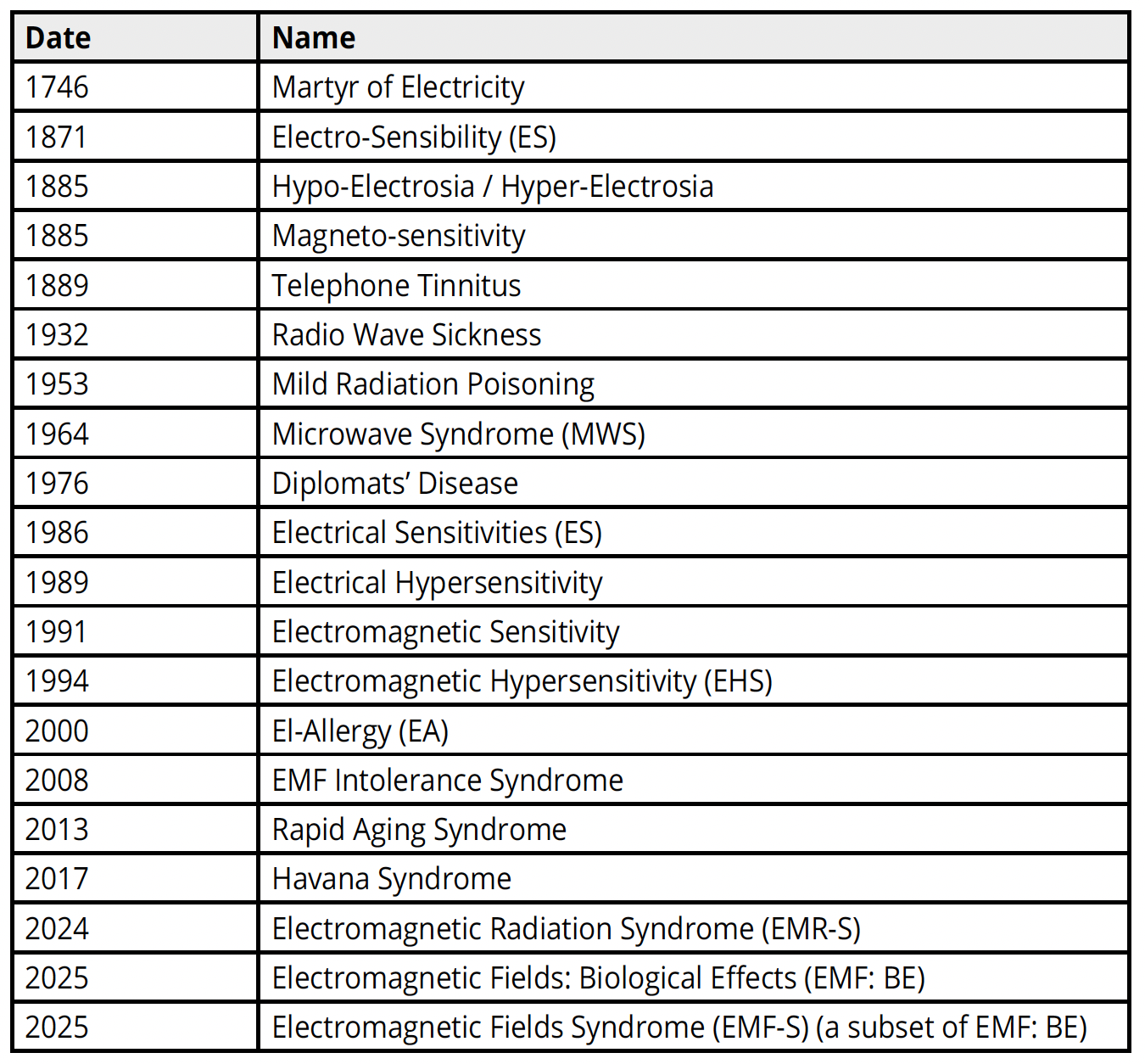Michael Bevington, Chair of Trustees at Electrosensitivity UK, examines the history of Electromagnetic Hypersensitivity (EHS) over the past 275 years, highlighting key 18th-century discoveries and early reports of health issues related to electromagnetic fields (EMFs)
There have been various definitions of Electromagnetic Hypersensitivity (EHS) over the last 275 years. This article shows that EHS conscious symptoms in the 1700s were the same as from 5G in 2023-2024. It describes the wide spectrum of sensitivity to Electromagnetic Fields (EMFs). Finally, it lists subconscious symptoms and names for EHS.
The discovery of electrical sensitivity in 1733
Electrical knowledge developed in the early 1700s with Hawksbee’s electrostatic generator of 1719 and the Leyden Jar of 1745. Static electricity, when discharged, creates an electric current, which can cause serious ill health. On 8 April 1730, Stephen Gray, the ‘father’ of electricity, first showed that the human body conducts electric charges, which can be induced and transmitted wirelessly, using a boy as his conductor, suspended on insulating silk strings. Similarly, people whose electric field, charged by Wi-Fi and mobile phone signals, extends some distance from their bodies can cause significant ill health in people sensitised to EMFs.
Adverse EMF health effects were first recorded in 1733 by Du Fay in Paris. Professor Musschenbroek at Leiden felt as though he was struck by lightning, by then known as electrical. Winkler, in 1744, reported unsupportable pains. In 1745, Bose reported that wireless electric charges could alter cardiovascular rhythms and increase blood effusion from a wound, while in 1746, Trembly reported that electrification increased his pulse. Many researchers were Fellows of the Royal Society of London. Most short-term conscious symptoms specific to EHS before 1800 were identical to those of 2023-2024 near 5G transmitters (Table 1).
The discovery of electrical hypersensitivity by 1750
Exposure to EMFs can trigger hypersensitivity in people vulnerable through genetics or physical state. These people suffer more severe and long-lasting adverse symptoms from much lower EMF levels than before. Electrical hypersensitivity was reported in 1750 by Wilson, who at first endured ‘the most violent shocks’ along his arms. However, after several weeks, he was ‘weakened so much that a very small quantity’ of electricity would shock him ‘to a great degree and cause uncommon pain,’ forcing him to stop research. By 1874, EMF symptoms were ‘as truly realities as smallpox, typhoid fever, or a broken leg.’
People’s EMF sensitivity covers a wide spectrum. Between about 1.6% and 3% of the population are estimated to be hyper-sensitive; some 30% are consciously sensitive to EMF exposures, while some 20% do not have conscious short-term symptoms. The latter are ‘hypo-sensitive’ or below average, while others are ‘hyper-sensitive’ or above average, as recognised by Arndt in 1885. International Guidelines for EMF limits, such as IGNIR, define people more susceptible as ‘sensitive,’ including children, pregnant women, older adults and those with chronic or inflammatory conditions.
Both extremes of sensitivity may have supposed advantages in different situations. Hypersensitivity can encourage protection, but it makes life extremely painful, causing serious neurological harm, infertility and cancers. Genetic variations for environmental sensitivities differ between individuals and include DNA repair genes, sometimes associated with photosensitivity, and voltage-gated channels, as for congenital insensitivity to pain. Both are associated with EMF sensitivity. The inter-connectedness of environmental sensitivities has been known since the 1760s, with electricity able to change the senses of smell and taste as well as feeling, sight and hearing. The electrical engineer Tesla suffered extreme EHS and many sensitivities.
Long-term, often subconscious, symptoms were established in 1799 with atmospheric electrification linked to viruses. By 1893, cardiovascular and metabolic effects were discovered, blood pearl-chain rouleaux formation in 1946, cataracts in 1948, and cancers in 1953. More recently discovered effects include infertility and neurological disorders.

Names for electromagnetic hypersensitivity (EHS) since 1746
Sensitivity to EMFs has had many names since 1746 when Professor Doppelmayer of Nuremberg was called a ‘martyr of electricity’ because of his terrible sufferings. Names define the physical cause, electrical and electromagnetic, and biological responses, such as sensitivity or syndrome. Some specify only some frequencies, such as microwave, radiation or radio, or jobs and locations, such as diplomats and Havana.
Since the 1740s, EMFs have also been used therapeutically. Therefore, a name defining all biological effects cannot be limited to adverse symptoms. Here, it is suggested that ‘Electromagnetic Fields: Biological Effects’ (EMF: BE) covers all responses, with the subset ‘EMF Syndrome’ (EMF-S) describing adverse EHS symptoms (Table 2).
(‘Idiopathic Environmental Intolerance attributed to EMFs’ (IEI-EMF), proposed by the World Health Organization in 2004, arbitrarily confused two separate conditions, physical EMF Sensitivity known since 1733, and psychological Electrophobia known since 1904. It assumed without proof that only the latter existed, excluding physical EHS.)


